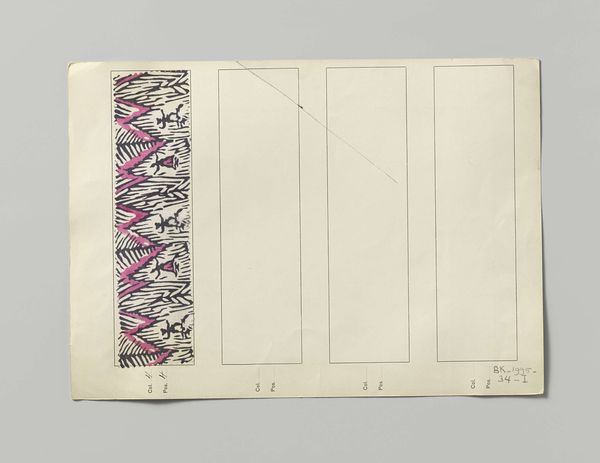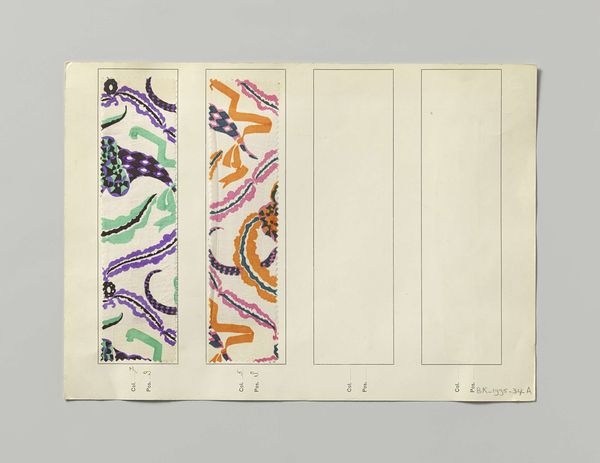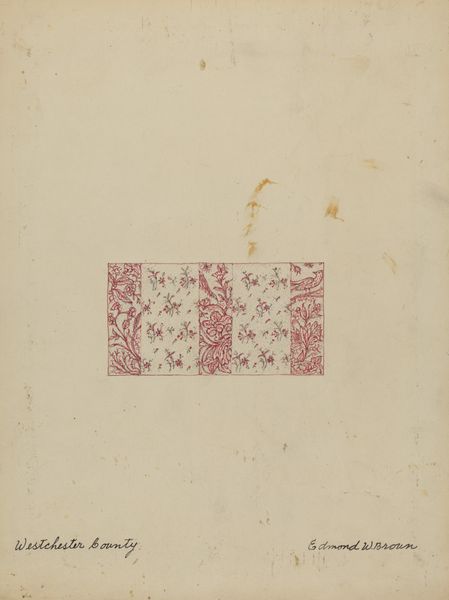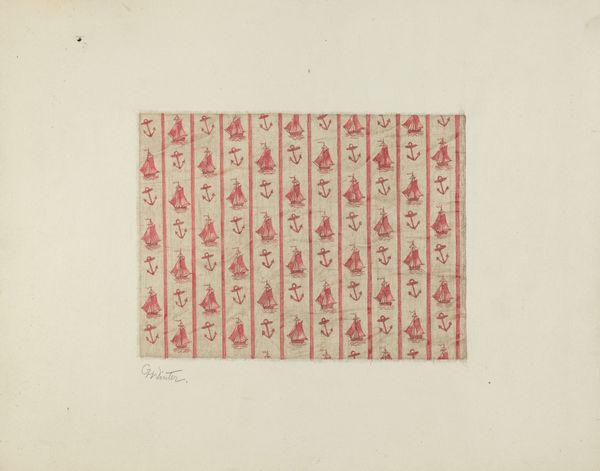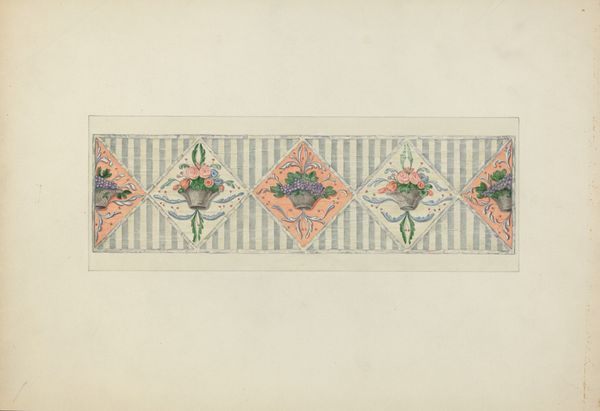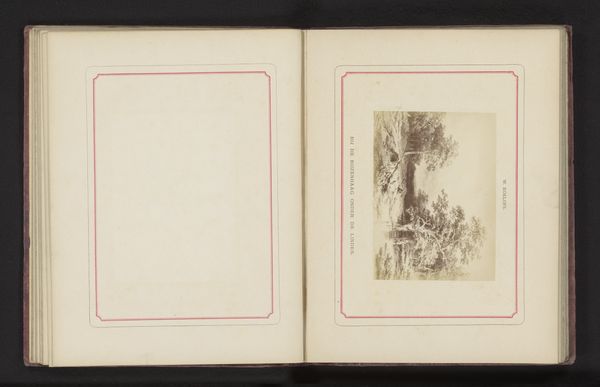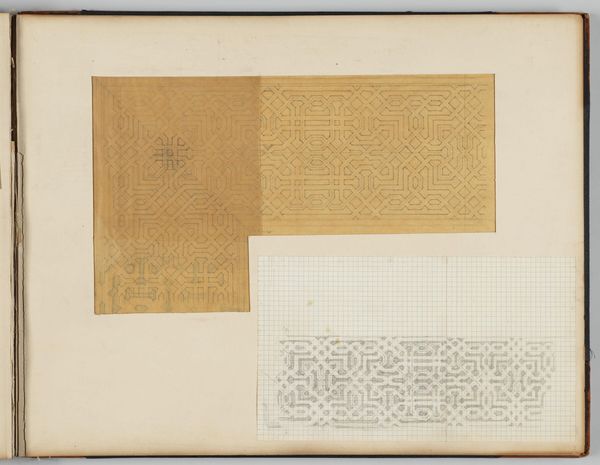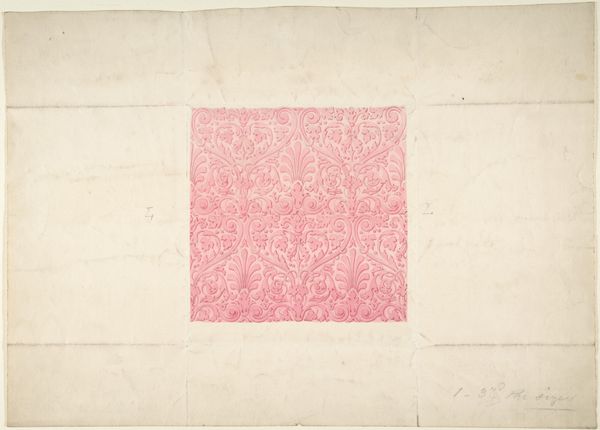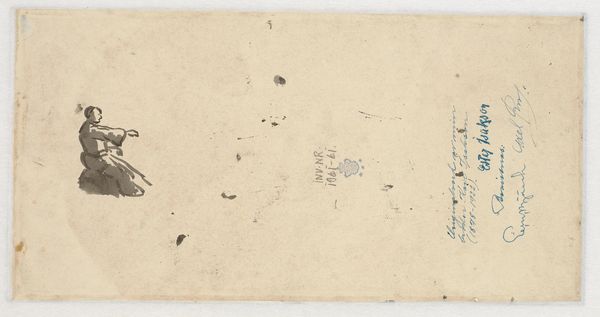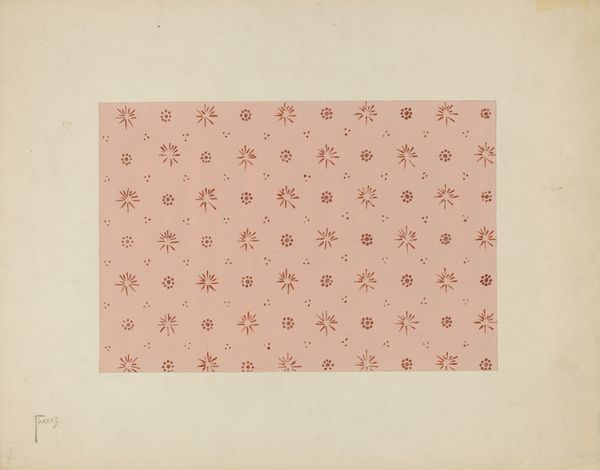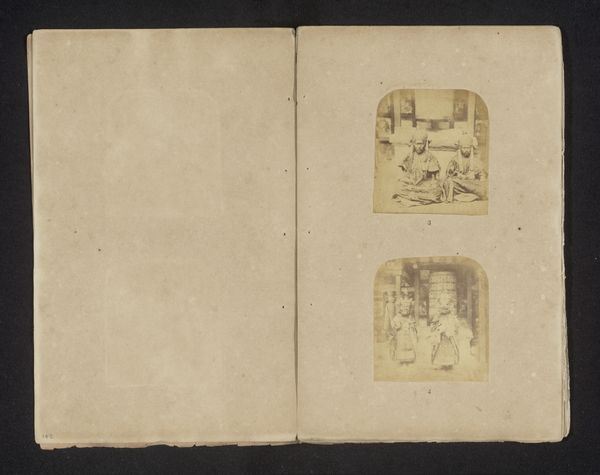
#
homemade paper
#
paper non-digital material
#
pastel soft colours
#
fashion mockup
#
studio lighting mockup
#
light coloured
#
personal journal design
#
personal sketchbook
#
watercolour bleed
#
design on paper
Dimensions: height 25.3 cm, width 35 cm, height 5.5 cm, width 21.5 cm, height 5.9 cm, width 21.6 cm
Copyright: Rijks Museum: Open Domain
Curator: This work is titled "Staal met bedrukte zijde, dessin Chi-ki," meaning "Steel with printed silk, Chi-ki design," created circa 1920-1921 by the Wiener Werkstätte. It presents samples of fabric design. Editor: It’s quite delicate. The pastel colours and slightly blurred watercolor effect give it an almost dreamlike quality. A bit whimsical, wouldn't you say? Curator: Indeed. The Wiener Werkstätte, or Vienna Workshops, played a pivotal role in shifting artistic production. They moved away from industrial manufacturing toward handcrafted designs in the early 20th century, emphasizing artistic vision. The context in Vienna then was a burgeoning artistic environment filled with experimentation in visual design. Editor: The materials themselves speak volumes. To combine steel, usually a hard industrial material, with delicate silk subverts expectations. We also have to remember the labor involved; someone carefully transferred these designs onto silk, surely through a laborious and time-intensive process. Curator: Precisely. It highlights the departure from purely functional textiles. "Chi-ki" suggests perhaps an oriental influence. What becomes interesting to explore is the way workshops re-appropriated global design elements. In its essence, this object sits at the nexus of modern artistic trends, reinterpreting motifs through commercial lenses. Editor: It's intriguing how this seemingly simple piece provides a window into the complex interplay of art, craft, and commerce. It is as much a testament to aesthetic beauty as it is to the tangible labor that breathed it into existence. We should ask ourselves whose labour goes into such designs and what their conditions were like. Curator: Agreed. It definitely urges us to delve beyond surface appearances and ponder upon socio-political undercurrents shaping production and aesthetics. Editor: Looking at the material, I have come to the idea about what textiles mean socially and politically. Thank you for sharing the details. Curator: Thank you. Understanding the cultural narratives embedded within such designs helps in reevaluating assumptions and appreciating their complete role in social spheres.
Comments
No comments
Be the first to comment and join the conversation on the ultimate creative platform.
